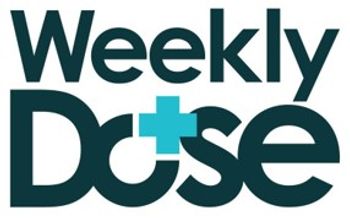
Screening Rates for E-cigarette Use in Primary Care Lower than for Other Substances, According to New Research
Screening rates for e-cigarette use in primary care were almost two-thirds lower than those for combustible tobacco, alcohol, and illicit substances, according to new data.
Screening for e-cigarette use is much lower than screening for other potentially harmful substances in primary care, according to the results of a study published in the American Journal of Preventive Medicine.
The study also showed that the use of combustible tobacco or illicit substances was associated with an increased likelihood of being screened.
The US Centers for Disease Control and Prevention (CDC) estimated that more than 2 million high school and middle school students in the US
“Although e-cigarettes may represent harm-reduction for those transitioning from combustible cigarettes, they are not without potential negative health consequences,” wrote first author Brandon T. Sanford, PhD, a postdoctoral fellow at the Medical University of South Carolina, and colleagues. “Perhaps most importantly, up to two-thirds of adults who use e-cigarettes report a desire or a plan to quit. Primary care represents an important point of contact for assessing adult e-cigarette use and associated health risks.”
To gain further insight into screening for e-cigarette use in primary care settings, Sanford and colleagues evaluated data from 134 931 adults, of whom 61.2% were women and 65.3% were White, who visited one of 41 primary care clinics within a 12-month period (June 2021-June 2022). Data on demographics, combustible tobacco use, alcohol use, illicit drug use, and e-cigarette use were obtained through electronic health records (EHRs). Logistic regression was used to examine variables associated with differential odds of being screened for e-cigarette use, according to the study.
Findings
Investigators reported that, “screening rates for e-cigarette usage were almost two-thirds lower than those of combustible tobacco, alcohol and illicit substances.” Specifically, the overall rate of e-cigarette screening in primary care clinics was 34.8% compared with 99.5% for tobacco use, 96.2% for alcohol use, and 92.6% for illicit drug use.
Among adults who were screened for e-cigarette use, 3.6% reported current use, which is “consistent with recent estimates of the national adult prevalence,” wrote the research team. Among the 7032 participants with documented nicotine use, 17.2% (n=1207) used mono e-cigarettes exclusively, 76.3% (n=5364) used combustible tobacco exclusively, and 6.6% (n=461) reported dual use of e-cigarettes and combustible tobacco.
“Those who used combustible tobacco or illicit substances as well as younger patients were more likely to have been screened for e-cigarette use,” wrote Sanford and colleagues. The researchers also found that those who screened positively for e-cigarette use were more likely to be younger, male, and White compared to those who were assessed but did not report current or ever use (P<.001 for all)
The lack of screening in primary care might be due to the relatively recent proliferation of e-cigarettes, the recent addition of e-cigarette documentation to EHRs, or a lack of training on screening for e-cigarette use, according to the authors. “This is unfortunate, as over 60% of people who use e-cigarettes report they would like to discuss their use with their primary care provider,” wrote the team.
“Given the observed prevalence of e-cigarette usage, improving the rate of e-cigarette screening for adult patients remains vital,” concluded Sanford et al. “One potential improvement could be to integrate the e-cigarette screening item into the combustible tobacco section. Additionally, to reduce burden on staff, flags for screening could be selectively utilized for younger patients (eg, age <55 years) or those with a history of combustible tobacco use.”
Reference: Sanford BT, Rojewski AM, Palmer A, et al.
Newsletter
Enhance your clinical practice with the Patient Care newsletter, offering the latest evidence-based guidelines, diagnostic insights, and treatment strategies for primary care physicians.

















































































































































































































































































